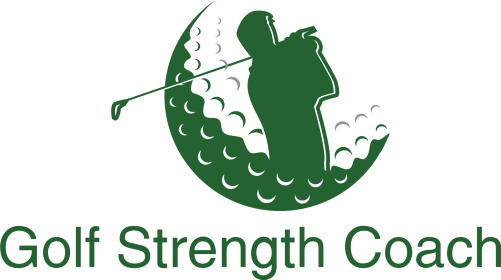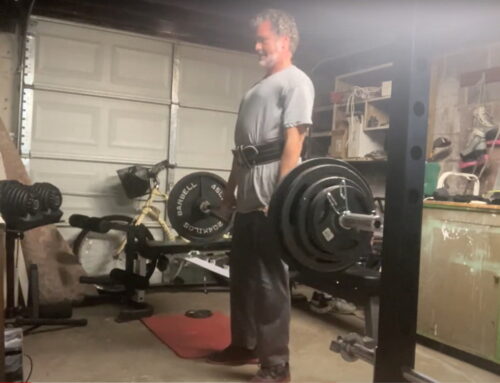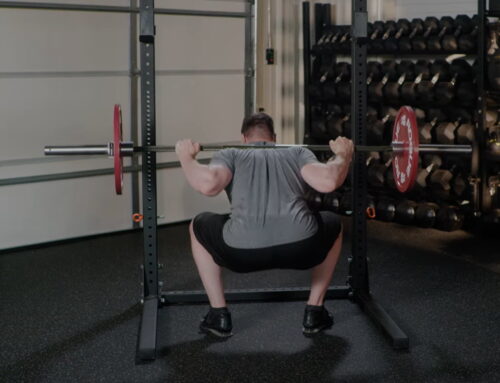The vast majority of golfers who engage in some sort of fitness to help improve their game are merely exercising, rather than training.
I say this because most of them do not stick with a long-term plan where the results can be measured reliably.
Instead, there is only anecdotal evidence provided that says they are hitting the ball further than ever and maybe shooting some lower scores.
But are they? How often are we ever provided actual data that says because of exercise program X, this player increased their swing speed by 10 mph after three months of training?
All we ever really see are testimonials.
I’ve always had this issue with the golf instruction world as well.
But, I digress.
Training vs Exercise
Most people who work out are merely exercising. They do this to lose weight or “get in shape.”
In the case with golfers, some will say they are exercising to improve their swing or increase their clubhead speed.
As a result, they’ll perform a number of exercises and stretches to help themselves get a little stronger and more flexible.
These exercises are often done with resistance bands, some dumbbells or even kettlebells.
These are helpful tools, but they are more useful as conditioning tools, rather than for strength training.
Most golfers ultimately fail at their goal because they are exercising for the wrong reason(s).
Exercise alone cannot improve your golf swing, nor increase your golf swing speed. It only gives you the potential to do so.
Golfers who actually train are also exercising.
However, they are following a plan in order to improve performance related to their training.
Perhaps they have a goal of deadlifting 500 pounds.
Their time in the gym spent with purpose and intent, and they are following a program.
As a by-product of their training, they get strong, and gives them the potential to hit the ball further.
People who train are also far more likely to stick with their training. In fact, they hate missing a session.
On the other hand, people who only exercise to get a little stronger and more flexible are far more likely to skip a day or week.
Eventually, they stop working out, and they are right back where they started.
These are also the people who use any excuse to not go to the gym.
People who train build their schedules around their training sessions.
For many, outside of family and work obligations, it is literally the most important part of their day.
As you may have guessed, training involves a different mindset than merely going to the gym to exercise.
Of course, you can’t just create the necessary mindset overnight. It takes time.
Therefore, if you have a training goal, you have to remember to start slow and keep your initial goals modest.
For example, if you follow the Starting Strength program for barbell training, you start out with conservative weights for the four main lifts (squat, deadlift, bench press, overhead press).
Then, with each workout, you add a little weight to the bar, and continue to do the same number of sets and reps.
Within just a couple months, you will have added significant weight to the bar, which means you are much stronger than when you started.
That is what will motivate you to continue to go to the gym and helps develop your mindset.
This is when the training starts to get hard though.
For any elite athlete, getting those last bits of improvement requires the most work.
At this point, it is the process that provides us with the payoff.
Strength Training pays off for Bryson DeChambeau
Bryson DeChambeau set out to gain more speed with his swing in an effort to hit it further on the golf course with all of his clubs.
He embarked on a fitness program that was focused on strength training along with other training to help improve his body speed.
He got much stronger, added muscle mass, and was able to increase his swing speed from 119 mph to over 130 mph.
Last year he finished 2nd in the World Long Drive Championship and won a tournament on the LIV Tour after shooting 61-58 on the weekend.
And now in 2024, he has picked up his second US Open title on the heels of a runner-up finish at the PGA Championship and a top 10 at the Masters.
That’s the payoff.
This is what training and the 2 Factor approach to performance look like.
Bryson got strong and worked on his golf skills to become one of the best players in the world.
A strength coach (hopefully you choose The Golf Strength Coach!) can put you on a program to get stronger. A golf coach can put you on a plan to improve your golf skills.
You can also go about this on your own as well… there is plenty of information out there to help get you started.
Now, get to work!


